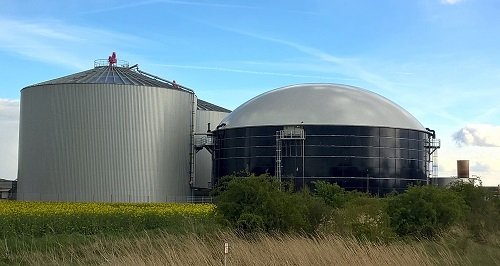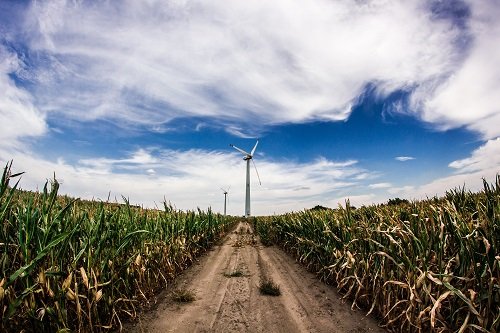
Nell’ampia visione del progetto di risanamento ambientale, oltre all’aspetto critico dell’inquinamento atmosferico ( dati statistici ) causato dallo sversamento illegale di rifiuti tossici e dall’impossibilità di smaltire alcune di queste masse solide urbane senza danneggiare l’ecosistema terrestre, si ricercano misure alternative per lo smaltimento di alcuni tipi di rifiuti come il riciclo della frazione secca (plastica, carta, alluminio) e della frazione umida organica (compostaggio). Tuttavia nonostante gli sforzi della ricerca scientifica e della tecnologica avanzata in questa direzione siano importanti e significativi, il tasso di inquinamento atmosferico è ancora molto alto, esiste un’altra componente di inquinamento ben più importante e massiccia causata dalla combustione di carboni fossili e gas per la produzione di energia. Il settore energetico sta subendo una notevole evoluzione in termini di produzione di energia rinnovabile( Discovery-it ) proveniente da impianti fotovoltaici, idroelettrici e pale eoliche. In italia si stima che la produzione di energia elettrica rinnovabile soddisfi più del 37% del fabbisogno nazionale e che quest'anno sia aumentata del 29% ( dati statistici ). Tra le categorie di energie rinnovabili prima citate, vanno aggiunte altre molto importanti dal punto di vista del rendimento energetico ed economico, si tratta di tecniche alternative di produzione di energia termica ed elettrica provenienti da fonti biologiche come il Biogas.
IL BIOGAS: COS’E’?
E’ definita biogas, una miscela composta da diversi tipi di gas quali ad esempio metano e anidride carbonica che si ottiene mediante un processo di fermentazione anaerobiotica (in assenza di ossigeno) di una biomassa. Questo processo di fermentazione permette di trasformare biomasse lignocellulosiche in sostanze combustibili a forte rendimento energetico come il bioetanolo e attraverso un processo di pirolisi della materia cellulosica si ottiene il biodiesel (BTL). Il sistema di industrializzazione per la produzione di biomasse destinate alla produzione di energia è tutt’ora oggetto di ricerca e sviluppo in quanto si riscontrano diverse problematiche relative alla logistica dei mezzi di produzione e alle particolari condizioni geografiche e geologiche delle colture energetiche. In Italia esistono già 199 impianti di produzione di biogas e si auspica la progettazione di altri impianti che soddisfino il fabbisogno nazionale in modo tale da abbandonare le fonti energetiche più inquinanti.
Esistono diversi tipi di colture energetiche: colture da carboidrati (mais, cereali, sorgo zuccherino) particolarmente idonee alla produzione di bioetanolo per la cogenerazione di energia elettrica e termica, colture oleaginose (colza e girasole) molto usate per la produzione di biodiesel, colture da biomassa lignocellulosica (Arundo Donax, Sorgo) che sono caratterizzate da una elevata produzione di massa secca indicata per diversi utilizzi energetici dalla combustione alla produzione di biocarburanti . Le caratteristiche fortemente competitive dal punto di vista economico sono la notevole resistenza di queste piante erbacee da biomassa a condizioni climatiche estreme e la spontaneità con cui crescono. Esse si dividono in piante a ciclo annuale e piante perennanti, tra queste si distingue in particolar modo l’Arundo Donax (Canna Comune) ( rif. ), originaria del Sud-Est asiatico naturalizzata poi in tutta la fascia mediterranea, è una pianta erbacea perennante capace di resistere a climi torridi e a lunghi periodi di siccità alternati anche a forti gelate e climi umidi ed è considerata una delle migliori specie erbacee per la produzione di biomassa lignocellulosica. Le caratteristiche di questa pianta non solo la rendono altamente efficace per la coltura da biomassa, ma secondo alcune recenti ricerche scientifiche, risulta che le sue caratteristiche e la sua capacità di adattamento a qualsiasi tipo di suolo, la rendono particolarmente efficace per la bonifica di terreni inquinati da metalli pesanti avendo radici molto profonde e avendo le foglie che contengono molti composti chimici e che sono ricche di silicio.

VERSO UN MONDO MIGLIORE
Come detto, esistono numerose e diverse problematiche relative alla produzione su larga scala di biomasse da utilizzare a scopo energetico: occorrono vaste aree agricole da impiantare con le diverse tipologie di colture (in Italia le aziende agricole sono per lo più piccole o medie con superfici di impianto molto ridotte), occorre ottimizzare il processo logistico di trasporto della biomassa e, soprattutto nel bacino Mediterraneo, occorre avviare un processo di propagazione della specie essendo la specie Arundo Donax sterile in questa zona, vanno valutate con precisione tutte le tappe della filiera di produzione analizzandone costi di produzione e rendimenti, l’impatto che essi hanno sull’ecosistema, valutazione dell’andamento climatico del Paese e molti altri fattori. Nonostante le difficoltà resto ottimista con la speranza che un giorno non molto lontano tutti potremmo usufruire di energia pulita a costi esigui, non nuocendo l’aria che respiriamo e il nostro Pianeta. La tecnologia e le amministrazioni si dirigono in questa direzione avendo finalmente compreso che la situazione ambientale è precaria e causa numerosissime vittime in tutto il mondo, d’altronde di Pianeta Terra c’è né solo uno.


In the broad vision of the environmental restoration project, in addition to the critical aspect of the air pollution ( source) caused by the illegal dumping of toxic waste and the impossibility of disposing of some of these urban solid masses without damaging the terrestrial ecosystem, alternative measures are sought for the disposal of some types of waste such as the recycling of the dry fraction (plastic, paper, aluminum) and of the wet fraction organic (composting). However, despite the efforts of scientific research and advanced technology in this direction are important and significant, the rate of atmospheric pollution is still very high, there is another far more important and massive component of pollution caused by the combustion of coals fossils and gas for the production of energy. The energy sector is undergoing a significant evolution in terms of production of renewable energy ( Discovery-it ) from photovoltaic, hydroelectric and wind turbine systems. In Italy it is estimated that the production of renewable electric energy satisfies more than 37% of the national needs and that this year has increased by 29%
( source ). Among the categories of renewable energy mentioned above, we must add other very important from the point of view of energy and economic performance, these are alternative techniques of energy production thermal and electrical from biological sources such as Biogas.
THE BIOGAS: WHAT IS IT?
It is defined biogas, a mixture composed of different types of gas such as methane and carbon dioxide which is obtained by an anaerobiotic fermentation process (in the absence of oxygen ) of a biomass. This fermentation process makes it possible to transform lignocellulosic biomass into combustible substances with a high energy yield such as bioethanol and, through a pyrolysis process of cellulose matter, biodiesel (BTL) is obtained. The industrialization system for the production of biomass for the production of energy is still the subject of research and development since there are several problems related to the logistics of the means of production and the particular geographical and geological conditions of the energy crops . In Italy there are already 199 biogas plants and it is hoped to design other plants that meet the national needs in such a way as to abandon the most polluting energy sources. There are different types of energy crops: carbohydrate crops (corn, cereals, sugary sorghum) particularly suitable for the production of bioethanol for the cogeneration of electrical and thermal energy, oilseed crops (rapeseed and sunflowers) widely used for the production of biodiesel, lignocellulosic biomass crops (Arundo Donax, Sorgo) which are characterized by a high production of dry mass indicated for different uses of energy from combustion to the production of biofuels. The highly competitive characteristics from an economic point of view are the remarkable resistance of these herbaceous biomass plants to extreme climatic conditions and the spontaneity with which they grow. They are divided into plants annual cycle and plants perennial, among these stands out in particular the Arundo Donax (Common Cane) ( source ), originally from Southeast Asia, naturalized then throughout the Mediterranean area, it is a perennial herbaceous plant capable of withstanding torrid climates and long periods of drought alternating also to strong frosts and humid climates and is considered one of the best herbaceous species for the production of lignocellulosic biomass. The characteristics of this plant not only make it highly effective for biomass cultivation, but according to some recent scientific research, it appears that its characteristics and its ability to adapt to any type of soil, make it particularly effective for the reclamation of lands polluted by heavy metals having very deep roots and having leaves which contain many chemical compounds and which are rich in silicon.
TOWARDS A BETTER WORLD
As mentioned, there are many different issues related to the large-scale production of biomass to be used for energy purposes: large agricultural areas are needed to be planted with the different types of crops (in Italy farms are mostly small or medium with surfaces of very small plant), it is necessary to optimize the logistic process of transport of the biomass and, above all in the Mediterranean basin, it is necessary to start a process of propagation of the species being the Arundo Donax species sterile in this area, accurately assess all the stages of the production chain analyzing production costs and returns, the impact they have on the ecosystem, assessment of the country's climatic trend and many other factors. Despite the difficulties I remain optimistic with the hope that one day not so far we could all benefit from clean energy at low costs, not harming the air we breathe and our planet. The technology and the administrations are heading in this direction having finally realized that the environmental situation is precarious and causes numerous victims all over the world, moreover of Planet Earth there is not only one.
the Prospects?


Immagine CC0 Creative Commons, si ringrazia @mrazura per il logo ITASTEM.
CLICK HERE AND VOTE FOR DAVINCI.WITNESS


